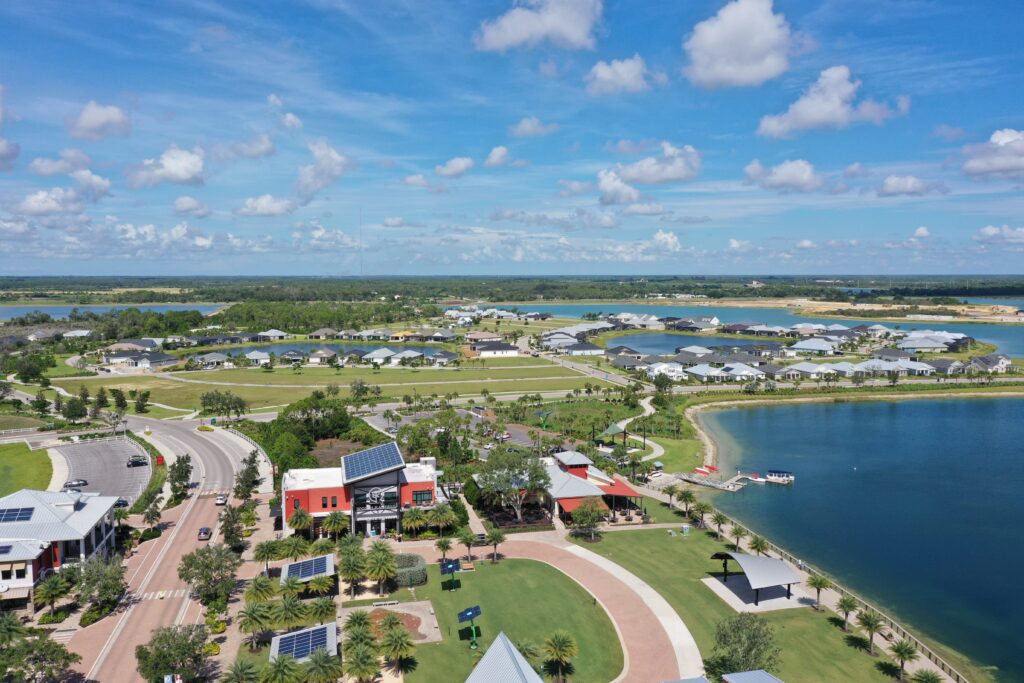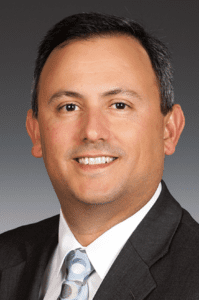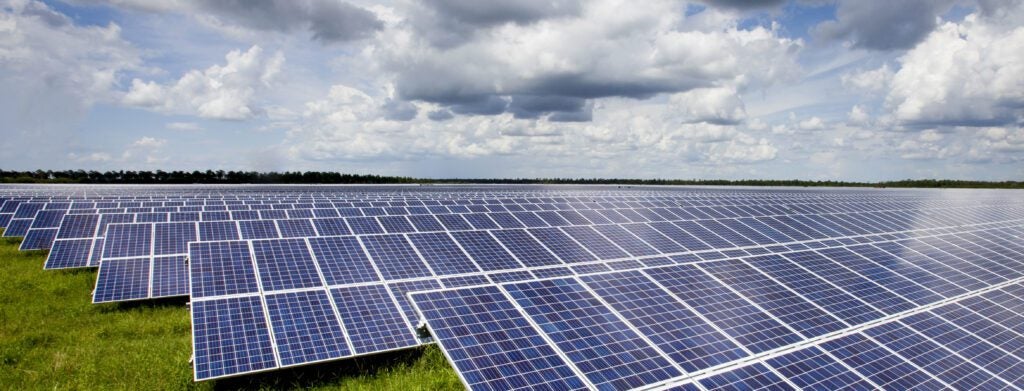How to Provide Reliable and Resilient Electricity Amid Today’s Changing Climate
The United Nations has gone on record to spotlight the negative effects of climate change that have affected the world in recent years. The group stated, “destructive storms have become more intense and more frequent in many regions … while the frequency and extent of tropical storms has led to destroyed homes and communities, causing huge economic losses.” As these statements continue to prove true around the U.S., building for climate resilience has become a critical factor for utility companies, developers, and city planners alike.
Hardening critical infrastructure and relying on solar and electrification (when possible) are a couple of key considerations for investment this decade. However, to create a fully sustainable, climate-resilient town entails more than just a power grid—it requires collaboration among leading innovators, regulators, utility companies, investors, and developers. Known today as Babcock Ranch—America’s first solar-powered town—is one such successful case study on how to go about providing reliable, resilient power.
COMMENTARY
Babcock Ranch gained national recognition in September 2022 when a Category 4 storm, Hurricane Ian, came barreling through Southwest Florida leaving an aftermath of devastation and destruction for all communities along its path—with the exception of communities like Babcock Ranch, which never lost power and was left with little to no damage after the natural disaster.

Looking to inspire more communities around the world to be more self-sufficient with distributed power generation in an era of ever-changing climate, we have outlined some key concepts for consideration.
What goes into the design and planning of a community such as Babcock Ranch, with regard to its energy production and consumption?
Florida Power & Light (FPL) works with developers to provide safe and reliable electric service for their construction projects across FPL’s service territory. When we plan for a new community like Babcock Ranch, we take into account the fact that any distributed energy systems, such as residents’ rooftop installations, installed within the community could be impacted by weather. Our customers will still require power even when the sun is not shining. For that reason, our distribution system is able to serve the full load of the customers inside a community, regardless of solar output and time of day.

While each project is different, many developers choose to install underground power lines. Underground power lines are more dependable than overhead lines, particularly during hurricanes and severe weather, when trees, vegetation and wind-blown debris can cause outages to overhead lines.
The majority of FPL’s lines at Babcock Ranch are underground. Underground lines performed six times better in Southwest Florida than above-ground lines during Hurricane Ian.
What is needed to make the distributed energy generation of a community such as Babcock Ranch possible? What is needed from an operations standpoint?
Babcock Ranch is not wholly powered by distributed energy generation. Babcock Ranch is served by a pair of storm-hardened transmission lines which feed the underground distribution lines within the community.
The two FPL solar energy centers located near Babcock Ranch produce reliable energy and help keep bills as low as possible for residents in the community and across the state.
Each solar energy center is capable of producing 74.5 MW of emissions-free energy, which is enough to power approximately 14,000 homes.
Additionally, Babcock Ranch has partnered with FPL to establish a second substation for added reliability and redundancy of service to the town every day and also during severe weather.
What type of maintenance is required on the power infrastructure at Babcock Ranch? How is this maintenance accomplished?
FPL is recognized as a leader in service reliability. Our customers benefit from the nation’s most advanced energy grid. We conduct ongoing assessments and inspections of the FPL transmission, substations, and distribution grid along with any associated work to ensure a high level of reliability for our customers.

In addition, we work year-round to strengthen the grid to make it even better for our customers and provide them with reliable service they can count on in good weather and bad.
By 2025, we will have hardened or placed all of our main power lines in the West region underground, which will improve day-to-day reliability and speed efforts after severe weather.
What lessons from Babcock Ranch have been learned that could be used in the design of future planned communities, when it comes to their energy infrastructure?
Underground lines improve resiliency during hurricanes and severe weather and also enhance reliability during day-to-day conditions. FPL has been installing underground service for decades and is committed to increasing its underground facilities. Nearly 50% of FPL’s distribution system is currently underground, and about 90% of the new distribution lines we install are underground.
Undergrounding is one way to reduce restoration costs and outage times associated with extreme weather events.
What is next in FPL’s partnership with Babcock Ranch?
As leaders in helping advance clean energy in Florida and beyond, Babcock Ranch and FPL continue to monitor and track the ever-changing environmental demands and technological advances in reliable and climate resilient power and energy design.
Babcock Ranch and FPL on April 22 will celebrate the grand opening of the 2,500-square-foot Solar Ranch—An FPL Eco-Discovery Center, highlighting a long-standing relationship and shared vision of a clean energy future for Florida. Through a series of colorful displays and interactive exhibits, the center—which will open to the public on May 1—will educate visitors about the process of solar power and how it works by converting energy from the sun into power. Visitors will have the opportunity to learn about battery storage, as the town is home to a combined solar-plus-battery storage system which helps extend the benefits of solar energy even when the sun is not shining or at night.
Drivers will also be able to “take a spin” and test their electric vehicle driving skills in a Roblox-powered game, which will help illustrate the benefits of electric vehicles and charging options available to FPL customers at home and on the road. Visitors will also learn about plants and animals found in the area in interactive seek-finding exhibits that illustrate Babcock Ranch and FPL’s commitment to environmental stewardship.
The new facility will also offer access to FPL’s neighboring three-story Observation Tower, providing a panoramic view of its two solar energy centers with approximately 687,000 panels that help power the town and all FPL customers.
—Ed De Varona is vice president of Transmission and Substation at Florida Power & Light Co.